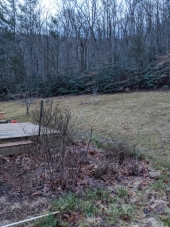
 2
2








Lorinne Anderson: Specializing in sick, injured, orphaned and problem wildlife for over 20 years.




 2
2




Iterations are fine, we don't have to be perfect
My 2nd Location:Florida HardinessZone:10 AHS:10 GDD:8500 Rainfall:2in/mth winter, 8in/mth summer, Soil:Sand pH8 Flat




Freyda said, "What suggestions do you have for planting fruit and nut trees here?
Invasive plants are Earth's way of insisting we notice her medicines. Stephen Herrod Buhner
Everyone learns what works by learning what doesn't work. Stephen Herrod Buhner




Believe in a better world. then follow the inspiration to create it!

|
I didn't like the taste of tongue and it didn't like the taste of me. I will now try this tiny ad:
The new purple deck of permaculture playing cards
https://www.kickstarter.com/projects/paulwheaton/garden-cards
|




